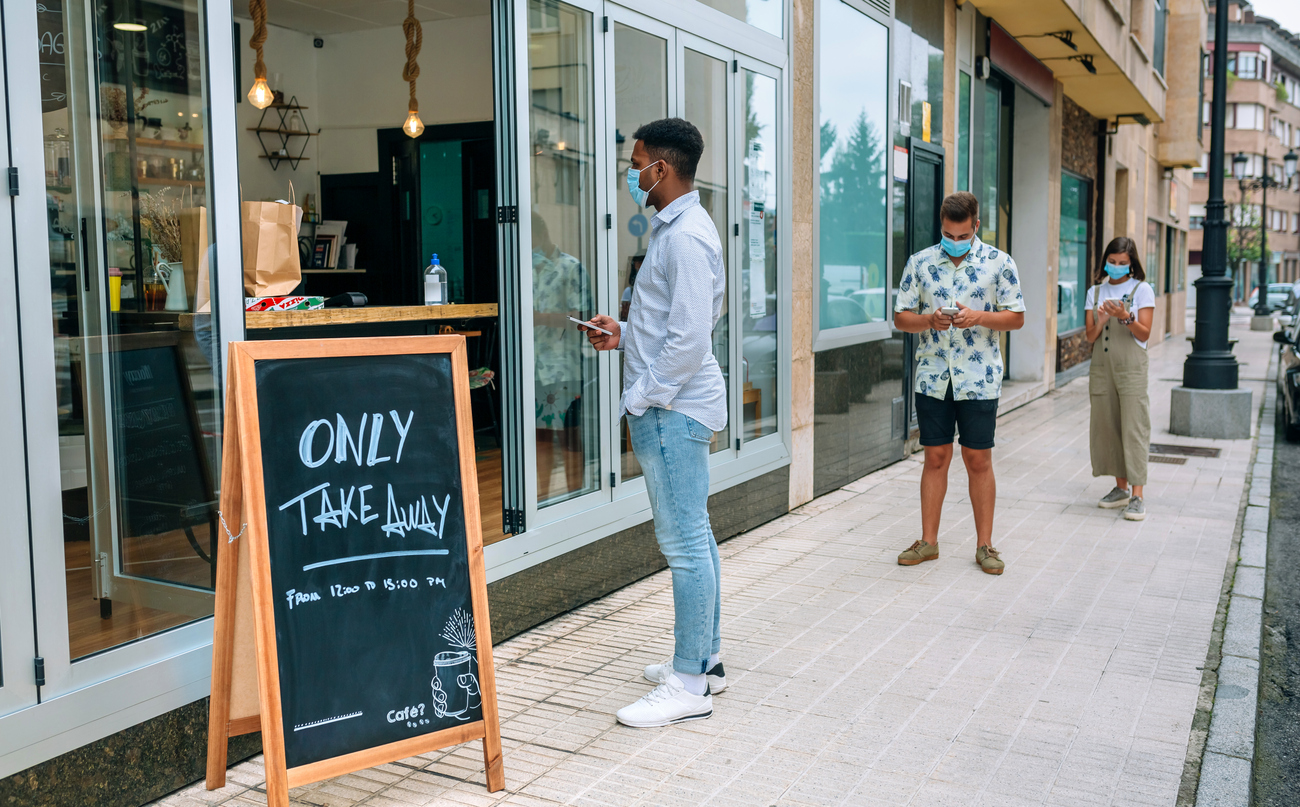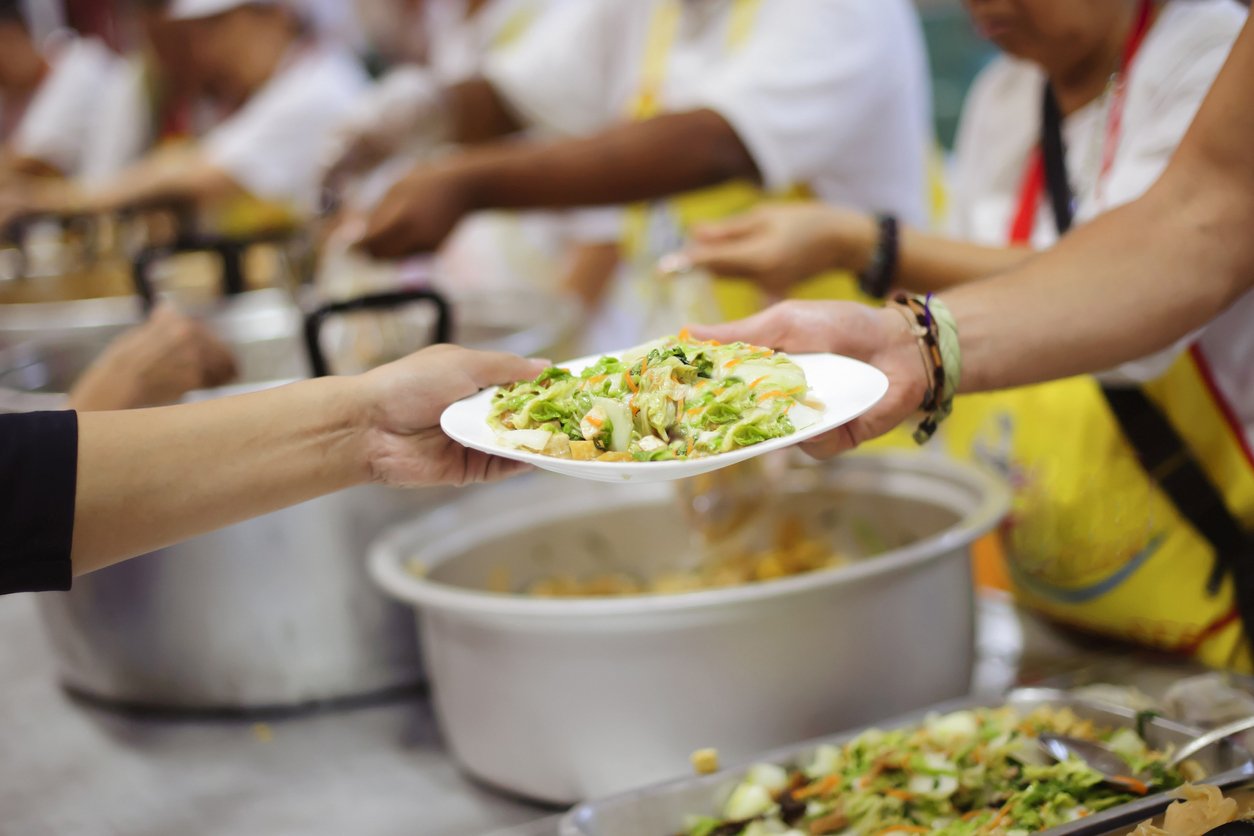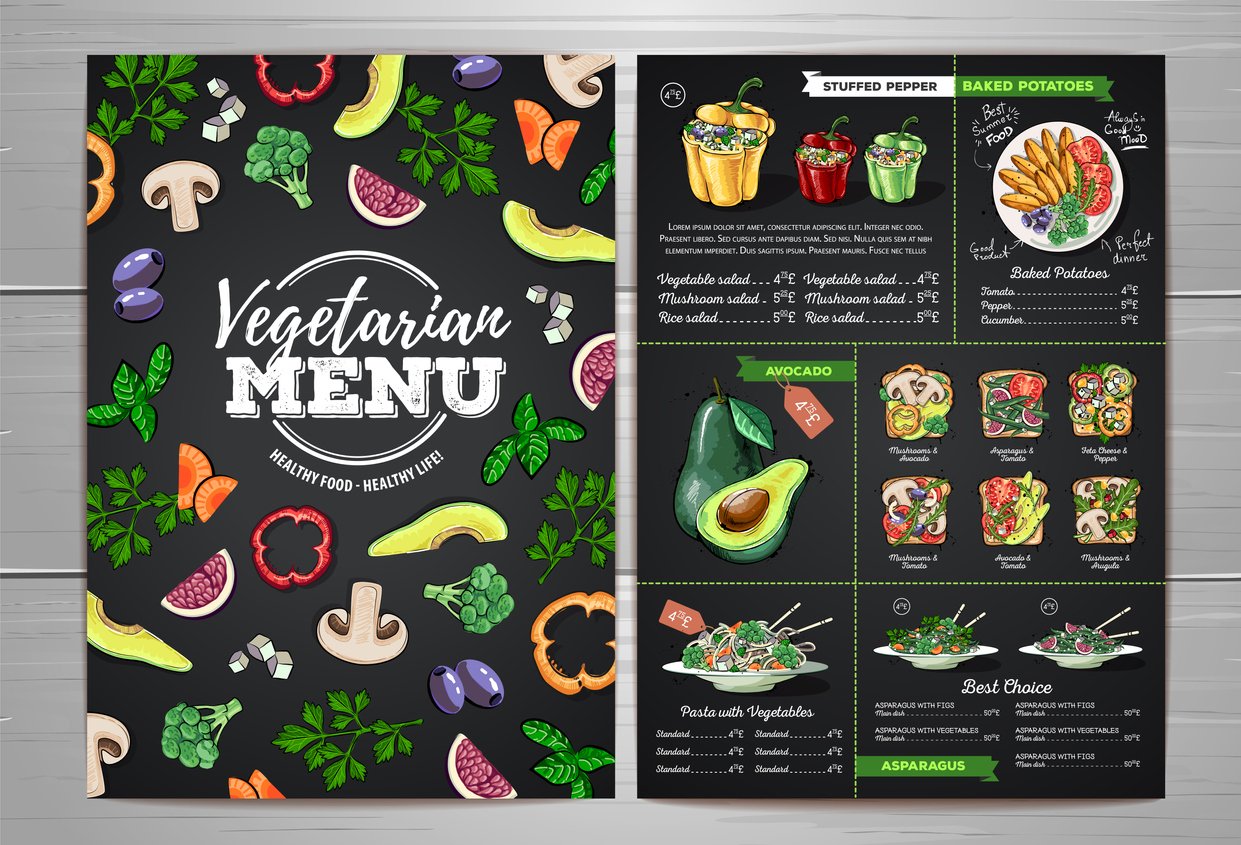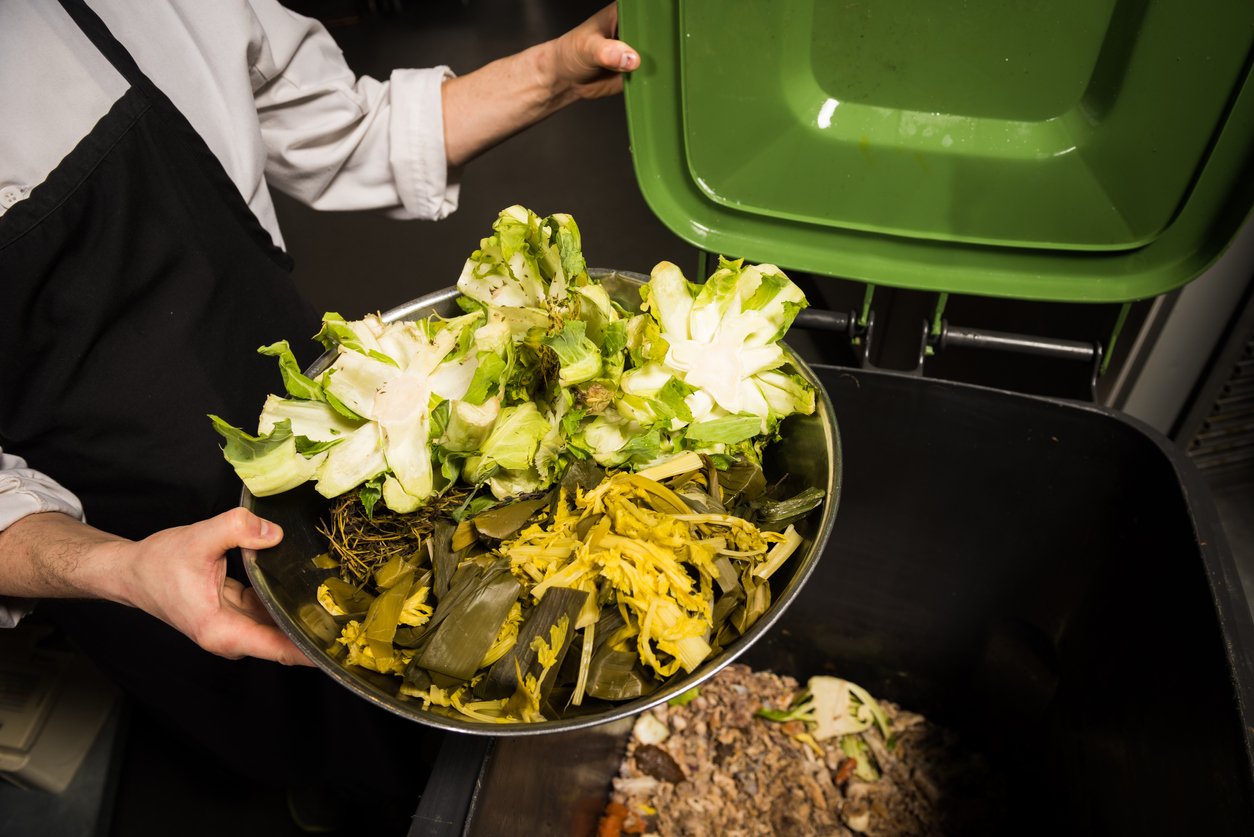Here’s a trivia question: What company is the world’s biggest buyer of potatoes, tomatoes, lettuce, and apples?
If you answered “McDonald’s,” you win the imaginary grand prize.
The point of this tidbit isn’t that McDonald’s is a wonderful organization that’s going above and beyond to provide healthy food, or that particularly cares about our planet (though potatoes, tomatoes, lettuce, and apples do all have their part to play). No, the reason I bring up McDonald’s as the world’s largest purchaser of several types of produce is to highlight how utterly massive this one restaurant chain is. And by contrast, many other restaurants that try to offer much healthier and more sustainable options are struggling to stay afloat.
In this article, we’ll look at the noble efforts that some restaurants are undertaking to contribute to a healthier and more sustainable world. If you want the option of dining out without compromising your values or your health, this is what you need to know about sustainable and socially responsible restaurants.
Challenges Facing the Restaurant Industry

First, we’ll discuss some of the challenges the restaurant industry faces, and then we’ll talk about the innovations and breakthroughs that are heartening and inspiring.
Owning and running a restaurant has always been challenging. The hours are long; the competition is fierce, and, in most market segments, the profit margins are narrow. For every five new restaurants that open, four of them will have gone out of business within 5 years.
And now, restaurants are having to deal with shaky supply chains and staff shortages while needing to treat all their customers well because, in the age of social media, one bad review can spell disaster.
The Impact of COVID-19 on Restaurants
The COVID-19 pandemic has left even longtime success stories vulnerable to failure. One year into the pandemic, somewhere between 70,000 and 90,000 restaurants or bars had closed, either permanently or temporarily.
This was partly due to plummeting demand, as people didn’t want to congregate indoors, especially when the death rate was high and hospitals were overflowing. But labor shortages also contributed to the demise of many restaurants. For many restaurant workers, having to enforce mask-wearing, an increased risk of disease, and hostile customers were the last straws, on top of a regular diet of arduous work, low pay, and difficult and sometimes abusive working conditions. To make things even more challenging, resignations in industries that restaurants depend on — such as agriculture, logistics, and sanitation — also took their toll.
Restaurants and Inflation
For many restaurants, inflation has made a difficult situation worse, as they’ve needed to increase pay to attract employees. And the cost of many ingredients has gone up, leading to increased menu prices or diminished portion sizes.
Restaurant workers are also suffering from inflation’s effects on necessities in their daily lives. The costs for fuel, childcare, groceries, and housing have all skyrocketed since the beginning of the pandemic. And to add to the problem, customers are also tipping less. According to a 2022 survey published by CreditCards.com, only about half of Gen Zers always tip following a sit-down meal. (In defense of this generation, those who do tip are more generous than previous generations, perhaps because many of them have had food service jobs and therefore have empathy for their servers.)
Why Restaurant Tipping Is Problematic
Tipping has long been a hot-button issue in the restaurant industry. Federal law in the US allows restaurants to pay their tipped workers an absurdly low minimum cash wage of $2.13 per hour, under the assumption that tips will make up the difference between that number and the legal total minimum wage of $7.25 (some state laws provide greater wage protection for tipped workers). When they don’t, the employer is legally required to make up the difference. But in practice, some restaurants shirk this responsibility.
Beyond the simple economics, tipping is problematic in other ways. It creates a scenario where servers are pressured to put up with often rude and abusive treatment by customers in order to get paid for their labor.
The commercial restaurant industry hasn’t exactly been at the forefront of racial healing either. Latino, Black, and Asian servers typically get tipped less than white ones. In upscale establishments, people of color are often relegated to back-of-house positions (line cooks and dishwashers, for example) that do not receive tips, while the white servers tend to be much better paid. And in some restaurants, servers provide inferior service to patrons of color under the assumption that their tips will be meager compared to those of white patrons.
Sexual Harassment in Restaurants
There are many jobs in our society where female workers find themselves at a disadvantage, but this is particularly egregious in the restaurant industry. Many female servers experience repeated sexual harassment on the job. The need to earn tips puts women at the mercy of customers, some of whom exploit this vulnerability in ways that are insulting and demeaning.
The advocacy group One Fair Wage introduced a report in April 2022 finding that roughly three-quarters of female servers said they experience or witness “sexual behaviors from customers that make them uncomfortable.”
Well, this has been a pretty depressing discussion so far. But there’s also some very good news. Despite all the challenges they face, some restaurants and restaurant workers are responding creatively and resourcefully and trying to be part of the solution. Their stories can give us hope, and their efforts deserve our support.
Restaurants as Environmentally & Socially Responsible Institutions

We’ve already seen huge changes and energetic innovation by restaurants reinventing themselves during the pandemic. From the advent of touchless ordering to the creation of “ghost kitchens” that prepare only take-out food, many restaurateurs seized crisis as a moment of opportunity.
Now more than ever, restaurants have the chance and incentive to think outside the box and make business decisions that will set them apart. These changes can lead to fierce customer loyalty, which can help them weather both the lingering effects of the COVID-19 pandemic and whatever other challenges are just down the road.
Restaurants Giving Back to the Community

Restaurants exist in communities. Even global chains hire community members to serve food to other community members.
Restaurants Feeding the Hungry and Homeless
One visible way to be a productive element in a community is to feed people in need who may lack the resources to pay for restaurant food. This might be by donating excess produce and other food to nearby food banks and food pantries, or mutual aid organizations, or by feeding the homeless directly.
Oakland Bloom, a nonprofit operating in Oakland, California, has pioneered programs in which chefs from refugee and immigrant backgrounds work in underutilized kitchens to provide food for mutual aid societies that serve their communities.
Rosa’s Fresh Pizza in Philadelphia started a “pay it forward” program where patrons could put a dollar in a jar to buy a slice of pizza for someone experiencing homelessness.
Acorn Community Cafe in Eugene, Oregon got its start after a couple of furloughed restaurant workers began serving free lunches in their community during the height of the COVID-19 pandemic. Now, they’re running a full service vegan cafe that is still offering free lunches to anyone who asks for the The Blue Plate Special. They’ve also partnered with Mission 86 Hunger, a local hunger relief organization, to further provide high quality, plant-based food to community members experiencing food insecurity through their Free Market Project and Community Partner Project.
In New York City, Rethink Food NYC turns restaurant food waste into ready-to-eat meals that it distributes via community partners such as soup kitchens. The founder, former chef Matt Jozwiak, noted that there are practical and financial disincentives for restaurants to donate their unsold food rather than simply toss it. Turning an unused head of cauliflower into a meal ingredient takes labor, whereas chucking it into the garbage bin doesn’t. And many restaurants fear being sued if someone gets sick from eating a meal “salvaged” from their kitchen (an unfounded concern, says Jozwiak, given that Good Samaritan laws protect restaurants from liability). But Rethink Food NYC is helping to remove these barriers.
Restaurants Hiring People from Historically Marginalized Communities
Being an immigrant or refugee, lacking an education, having an intellectual or physical disability, or having been incarcerated are all conditions that keep people out of many job markets. Restaurants can provide meaningful work to people in these situations. Emma’s Torch in Brooklyn, NY, hires refugees after providing them a 12-week culinary internship complete with English lessons.
The owners of Bitty & Beau’s Coffee Shop in Wilmington, North Carolina, have two children with Down syndrome. They opened the coffee shop in 2016 to provide employment opportunities to those with intellectual and developmental disabilities.
Second Shot Coffee in London, England, hires people experiencing homelessness. EDWINS Restaurant in Cleveland hires the formerly incarcerated. And Homegirl Cafe in Los Angeles provides skills training and employment to former gang members looking to rehabilitate themselves.
Restaurants Hosting Community Events
Many social commentators have bemoaned the loss of community spaces in modern society. Restaurants, with their often-spacious dining areas and ability to provide food and drink, can step in and fill this gap. By hosting community events and fundraisers, they can bring people together in ways that they might not connect otherwise.
Not only is this being a good neighbor, but, according to restaurant industry marketing experts, it’s also a great strategy for increasing customer frequency and loyalty.
Vimala’s Curryblossom Café in Chapel Hill, North Carolina, is one such restaurant that frequently hosts fundraisers, donates food to various events including gatherings of human rights advocates, and hosts a Global Neighborhood Day the Sunday after Thanksgiving to celebrate all the cultures coexisting in Chapel Hill.
Sustainable Restaurants

Restaurants can tweak or completely reinvent their processes in a variety of ways to become more environmentally sustainable. One easy change is to include more plant-based options on their menu. The industrialized meat and dairy industries are environmental nightmares on several fronts, including emission of greenhouse gases contributing to climate chaos, fertilizer runoff into streams and lakes causing algal blooms and marine life die-off, and their contribution to severe water shortages.
The good news for restaurants is that offering plant-based options is likely to make them more successful financially, as consumer demand for these foods is growing quickly. There are now plant-based options available at many fast-food restaurants, including some outlets of franchises like Burger King, White Castle, Taco Bell, Carl’s Jr., and even McDonald’s.
Some restaurants have taken this a step further and announced their commitment to going completely plant-based. Three of the most expensive and highly decorated restaurants in the world — Atelier Crenn in San Francisco, Gauthier Soho in London, and Eleven Madison Park in New York City — have removed all animal products from their menus. And there are signs that these trendsetters will inspire many more restaurants to make a bolder commitment to human and planetary health.
Farm to Table Restaurants & Using Local Produce
Many innovative restaurants are now buying ingredients from local farms. This serves several noble goals. First, food that has to be transported fewer miles comes with a smaller carbon footprint. Second, restaurants can support local growers, which supports the local economy and community. And third, small local farms tend to operate in more regenerative ways, using organic or integrated pest management techniques that can heal the soil rather than further degrade it.
At Chez Panisse in Berkley, California, chef and activist Alice Waters pioneered the “farm to table” approach, favoring local, organic, and sustainably harvested produce in her dishes.
In Albuquerque, New Mexico, Farm & Table changes its menus seasonally to reflect what’s growing in its environs and is transitioning its property into a permaculture farm.
Restaurants Reducing Plastic Waste
As a rule, restaurants are notoriously wasteful. If you’ve ever ordered takeout, you may have been appalled by the mounds of single-use plastic and other non-compostable material that contained and accompanied your meal — plastic containers, plastic straws and cutlery, styrofoam clamshells, foil wrappers, and so on.
Some restaurants are acting to change that, even going so far as to encourage customers to bring their own reusable containers, and cutting down on single-use plastic by replacing it with more compostable or recyclable material.
The fast-casual chain Dig has created a program whereby its frequent take-out customers are issued a reusable melamine bowl with a fitting plastic lid. For $3 a month, customers can just bring back their dirties when they return to the restaurant for their next meal.
Some restaurants, such as casual chain Just Salad, actually reward patrons who bring their own containers with discounts and other special deals.
Zero Waste Restaurants

The mountain of plastic waste is the most visible of the restaurant industry’s wasteful practices. Another that’s less obvious is the tremendous waste of food. Some of the food is wasted on customers’ plates in the form of meals not fully consumed. But a surprising share of all food purchased by restaurants never leaves the kitchen and just gets thrown out unsold.
Rhodora, a restaurant and wine bar in Brooklyn, New York, doesn’t own a trash can. Everything that comes in goes out, either in patrons’ stomachs, in a recycling bin, or as compost.
Frea, in Berlin, Germany, houses a composting machine that can turn uneaten food into compost in 24 hours. They’ve even gone so far as to purchase lampshades made of mycelium (fungus) fibers rather than synthetic materials.
Chicago’s Monteverde restaurant composts in a closed loop, thanks to composting partner City Farm, which picks up their food waste, turns it into rich soil, and grows produce that it sells back to the restaurant.
And some restaurants are avoiding food waste in the first place. The Gadarene Swine in Los Angeles upcycles things like carrot tops for garnishes, tomato drippings for salad dressing, and veggie trimmings into dirty rice dishes.
Restaurants Powered by Renewable Energy
One meaningful way restaurants can contribute to climate healing is by reducing their use of fossil fuels for energy. The Original Oyster House, located in rural Mobile, Alabama, erected a 55-foot wind turbine to offset their energy costs and provide fossil-fuel-free lighting for their seating area and children’s playground.
The “Get Lit Stay Lit” initiative in New Orleans seeks to turn each of the city’s roughly 3,000 restaurants into a small solar power and battery array. This will reduce their use of electricity from the grid, as well as create local resilience in a region often left without power by unpredictable storms.
Not every restaurant can install a wind turbine or solar panels, of course. But there are ways to pay for cleaner energy that’s produced offsite. Denver’s Root Down restaurant has decided to pay a premium ($1.90 per kilowatt hour) for sustainable wind-derived energy, as opposed to $1.00 per kilowatt hour for conventional energy produced by the local power grid.
Restaurants That Take Care of Their Employees

Restaurants can also provide safe and fair working conditions for their employees. We’ve seen that the industry has a troubling track record when it comes to workers’ physical and psychological safety, particularly women and people of color. Clearly, the restaurant industry must do more to protect all of its workers in both the front and the back of their establishments.
Fortunately, many eateries are now dropping the toxic “customer is always right” credo in order to prioritize protecting the wait staff from abuse from the public. Many restaurants are also now training and empowering their managers on how to spot and redirect harassment, and elevating more women and people of color to management and other higher-status positions.
Chef Erin Wade of the Homeroom restaurant in Oakland, California, has created a robust system to shut down inappropriate customer behavior before it escalates to harassment or other forms of abuse. Her system, called Not on the Menu, involves training the staff to report and proactively intervene using a color-coded continuum of behaviors.
Restaurants Compensating Employees Fairly
The decline in business during the early days of the pandemic led to lower tips, making it even harder for restaurant workers to make a living. But it turns out that well-paid and happy workers actually provide greater returns to restaurant owners. When Bell’s bistro in Los Alamos, California, raised the average worker’s wages to $27/hour and started adding perks like health care and paid time off, they found their profits increasing rather than being shaved. In fact, at a time when other establishments were shuttering, Bell’s doubled its revenue in 2021.
Restaurants can also replace the problematic system of tipping with guaranteed wages. Many restaurants, such as Bell’s, simply add a 20% service charge to each bill.
Another outcome of the shift in power from employer to employees has been a resurgence of collective bargaining. More and more restaurant workers are finding their voices, organizing, and demanding changes to protect all employees from exploitation.
Serving Healthier Food at Restaurants

Restaurants have traditionally been places where taste trumps nutrition. In a fiercely competitive environment, those establishments with the most hyper-palatable food typically win. And the recipe they’ve followed to produce that food has typically added copious quantities of sugar, fat (in the form of animal products and bottled oils), and salt to their dishes.
Many chefs fear that if they changed their menus to offer less meat and more vegetables, customer satisfaction would decrease. But a fascinating 2017 study engaged in “menu engineering” at three restaurants, decreasing meat portions and doubling vegetable portions for a random selection of patrons who were unaware of the manipulation of their plates. The researchers found no difference in satisfaction between the control group and the “more veggies and less meat” group, suggesting that restaurants can indeed provide healthier meals without risking customer dissatisfaction.
Restaurants Increasing Food Security & Longevity with Healthy Food Options
And now, increasingly, restaurants are leading the charge to provide healthier options — meals that taste great while also supporting the health of their patrons. (One would think that a good strategy for repeat business would be to keep your customers alive.)
Organizations like Blue Zones have started certifying restaurants that offer healthy dishes in three adjacent beach towns south of Los Angeles.
It’s exciting to see more restaurants offering healthier menus — specifically plant-based options and foods associated with longevity — especially in low-income areas and so-called “food deserts” where healthy food can be hard to come by.
One innovative example is Everytable, a California-based company that sells healthy fare via take-out storefronts located in food deserts and underserved communities, as well as the affluent communities where you might expect to find a high-end salad restaurant. Their twist is variable pricing: the same meal that might cost $8 in a leafy suburb is priced at $5 in a low-income neighborhood.
Organic Restaurants
Restaurants can also support the growing movement toward organic food and away from bioengineered (BE, also known as GMO) food. Given that roughly half the US population has doubts about the long-term safety of BE food, restaurants who embrace non-BE standards can expect public support, and may even gain a competitive advantage for their brand.
Since organic foods are typically more expensive than their “conventional” counterparts, few margin-conscious restaurants have embraced an organic standard for their fare. Exceptions can be found in upscale restaurants located in cities like Portland, Austin, Los Angeles, Philadelphia, and New York, among others.
But even if a restaurant can’t make the economic case for switching to an all-organic menu, it can still start to source some organic ingredients and offer some fully organic ingredients or menu items. Fast-casual restaurant chain Sharky’s Woodfired Mexican Grill uses organic beans, rice, greens, and other produce in many of its dishes, thus giving patrons a choice and the ability to vote with their wallets for the quality of food they desire.
What You Can Do

As communal gathering places, restaurants are uniquely positioned to be forces for good for people and communities. Many restaurants are already at the forefront of change, implementing practices that contribute to healthy, ethical, and sustainable food for all.
Many more are likely to follow, especially if customers, employees, and the community demand it. You can help restaurants to become more socially conscious in several ways.
First, vote with your dollars. Patronize those restaurants that are taking steps that align with your values. Second, ask for what you want. Talk to local restaurant owners and managers about your concerns. Ask about plant-based options (they may even decide to offer a plant-based menu). Let them know you would pay for healthier and more sustainable menu options. If you have the means, tip generously, or offer to pay for a meal for an unhoused person (the “pay it forward” program at Rosa’s Pizza in Philadelphia started when a patron asked if they could buy a slice for someone who couldn’t afford it).
Finally, you can get involved in a deeper way by educating yourself and supporting organizations that support restaurant employees like Unite Here!, One Fair Wage, or ROCUnited.
Of course, if you want to save money and be sure about every ingredient that goes into your food, you can prepare and enjoy food at home. For many reasons, you might prefer not to frequent restaurants at all. But if you do, it’s good to know that increasingly there are establishments that offer healthier and more sustainable options than places like McDonald’s.
Tell us in the comments:
-
Have you ever worked in food service? What was it like?
-
Have you seen more nutritious menu offerings at restaurants in recent years?
-
What restaurants in your area are doing good in the world? Give them a shout-out here.
Featured Image: iStock.com/Petmal

